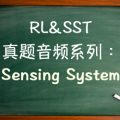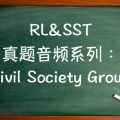【墨尔本PTE】PTE听力和口语一直是PTE口语考试中最重要的部分,今天墨尔本文波PTE培训学校给大家总结下PTE中的RL真题:
Licking and grooming
Rat takes care of its pups is by licking and grooming, nipple switching and arch back nursing so the rats that do a lot of licking and grooming and their lads rats that were very little, but most rats are in between, so that resembles a human behavior as well. You have mothers that are highly mothering and mothers that could care less and most mothers are somewhere in between. So if you look at these rats, all you do observe them and you put them in separate cages. You put the high lickers in one cage not the mothers but the offspring and the low lickers in another cage and then you let them grow and they’re adults now. Their mothers are long buried, and you look in the brain and you see that those who had high licking mothers express a lot of glucocorticoid receptor gene, and though so our lawmakers express no that reflects a number of receptors and that results in a different stress response. But this is not the only difference. We found later on. There are hundreds of genes that are differently expressed so if you get a mutation you know a polymorphism once in a million here just the motherly love changes hundreds of genes in one shot and it changes them in a very stable way that you can look at the old rat and you can say whether it was licked or not. But you can also say be behavior, so if you walk to the cages to the room the rats that were poorly lit are highly anxious and hard to handle, aggressive. And the rats that were very well handled as the little pups they are much more relaxed much easier to handle. So you know like every technician in the lab knows looking at the adult rat how it was licked when it was little pup.





